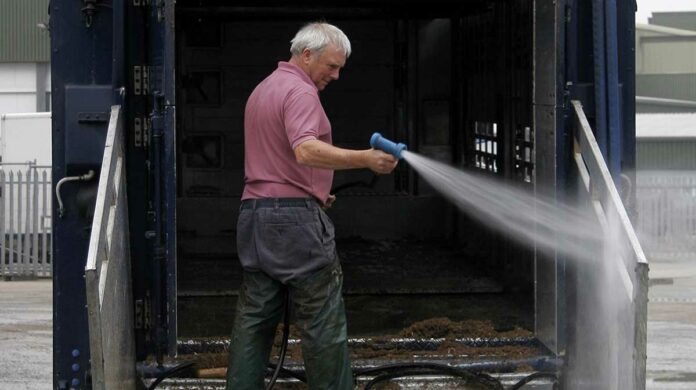The National Pig Association (NPA) has identified a concerning increase in the prevalence of swine dysentery within the pig sector in 2024. In response to this trend, the NPA has outlined five key points to help the industry tackle and prevent the spread of this disease.
At the recent Pig Industry Group (PIG) meeting in December, veterinary and producer members emphasized the need for collective action to address the issue of swine dysentery. They highlighted the importance of taking proactive measures to prevent the spread of the disease within the supply chain.
The five key points proposed by the NPA are as follows:
1. #MuckFreeTrucks: It is essential for hauliers, abattoirs, and producers to ensure that vehicles are thoroughly cleaned and disinfected after transporting pigs. Producers raised concerns about the inadequate washing facilities and long queues at some pork plants, emphasizing the need for improved standards in this area.
2. On-farm vehicle protocols: Pig producers should establish clear protocols regarding the movement of vehicles on their farms, including suppliers, delivery vehicles, builders, and contractors. Restricting access to certain areas of the farm can help prevent the spread of the disease between farms. Implementing measures such as strategically placed loading ramps can limit the need for vehicles to travel beyond specific points.
3. People movements: Strict protocols should be in place to regulate the movement of staff and visitors, including suppliers, delivery vehicles, builders, and contractors, within different areas of the farm. Providing adequate personal protective equipment (PPE), footbaths, showering facilities, and sectioning off different parts of the farm can help prevent the spread of swine dysentery. Veterinary experts have highlighted the ease with which the disease can be transmitted through small quantities of pig faeces.
4. Spotting symptoms: It is crucial for pig producers to remain vigilant for symptoms of swine dysentery, such as diarrhea and weight loss, and report any suspicious signs to their veterinarian immediately. Recent strains of the disease may present with less obvious symptoms, leading to delays in diagnosis and confirmation.
5. Significant Diseases Charter: Vets and producers are encouraged to report all cases of swine dysentery to the Significant Diseases Charter, a requirement for Red Tractor assured producers. Non-assured producers should also adhere to this reporting system to ensure that others in the industry are informed about the local disease situation. Discrepancies have been noted between the number of official swine dysentery confirmations by the Animal and Plant Health Agency (APHA) and the cases reported on the charter.
By implementing these five key points across the supply chain, the pig sector can work together to effectively combat the increasing prevalence of swine dysentery. Collaboration, communication, and adherence to best practices will be essential in preventing the spread of this disease and maintaining the health and welfare of pig populations.


